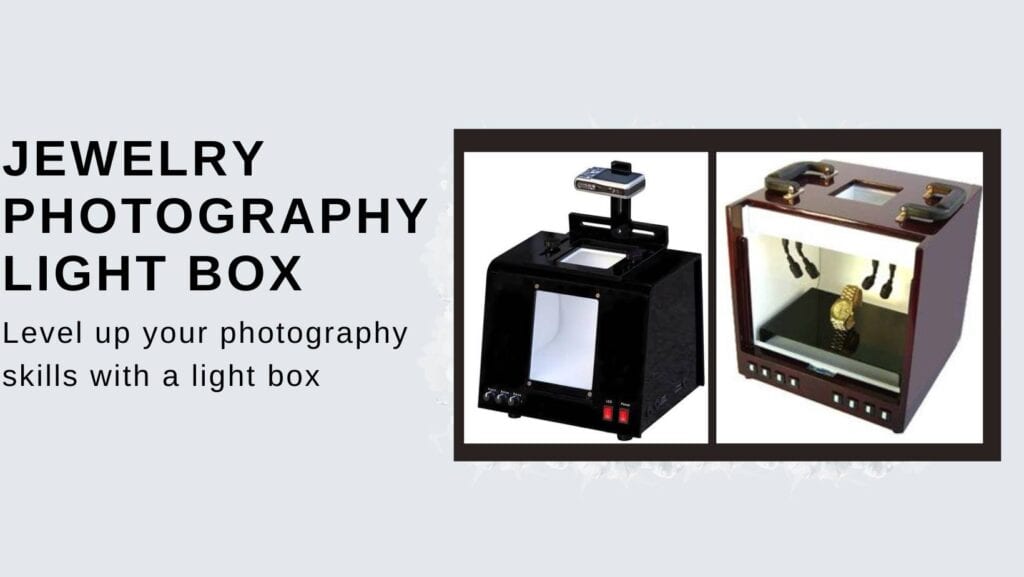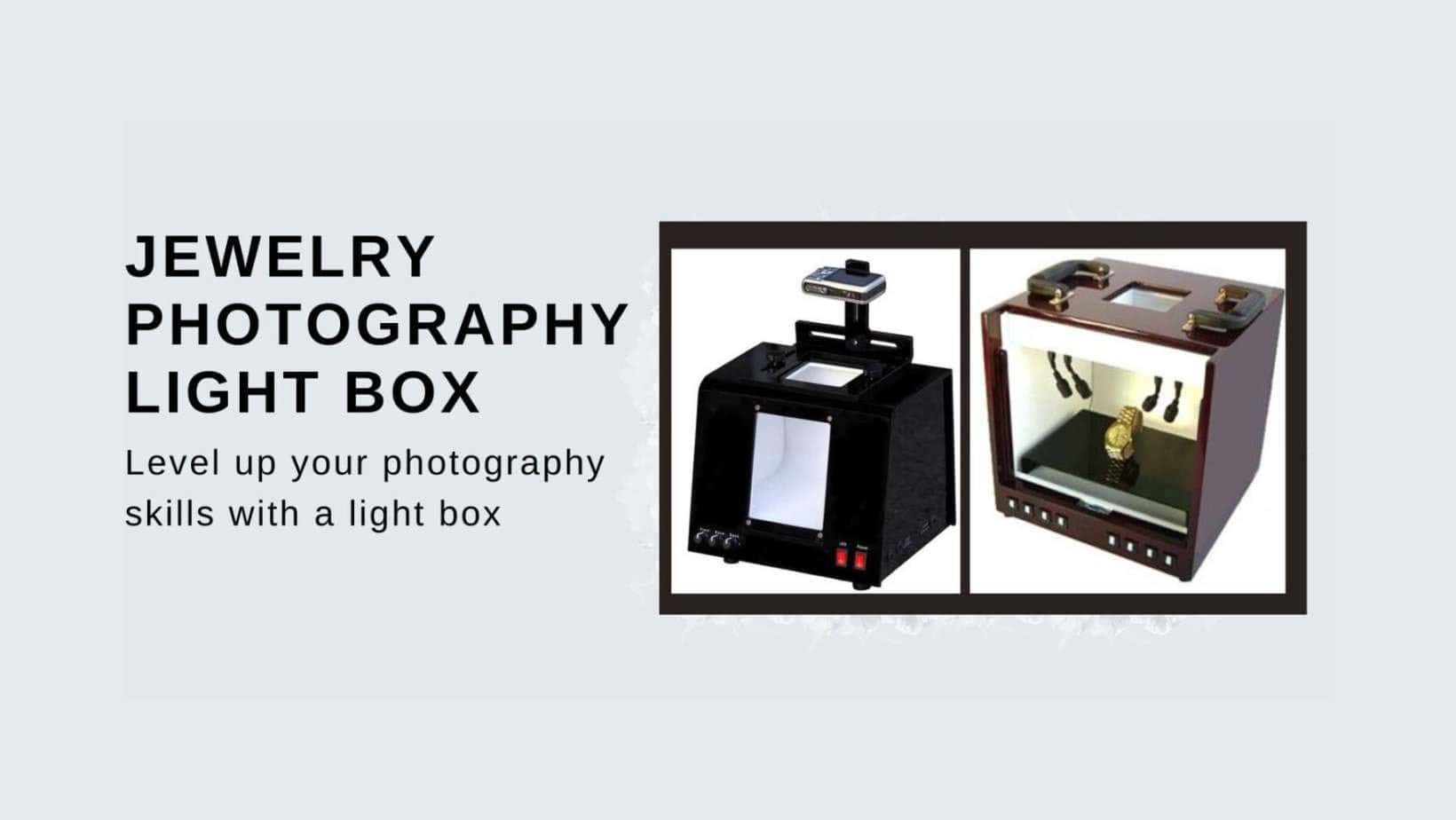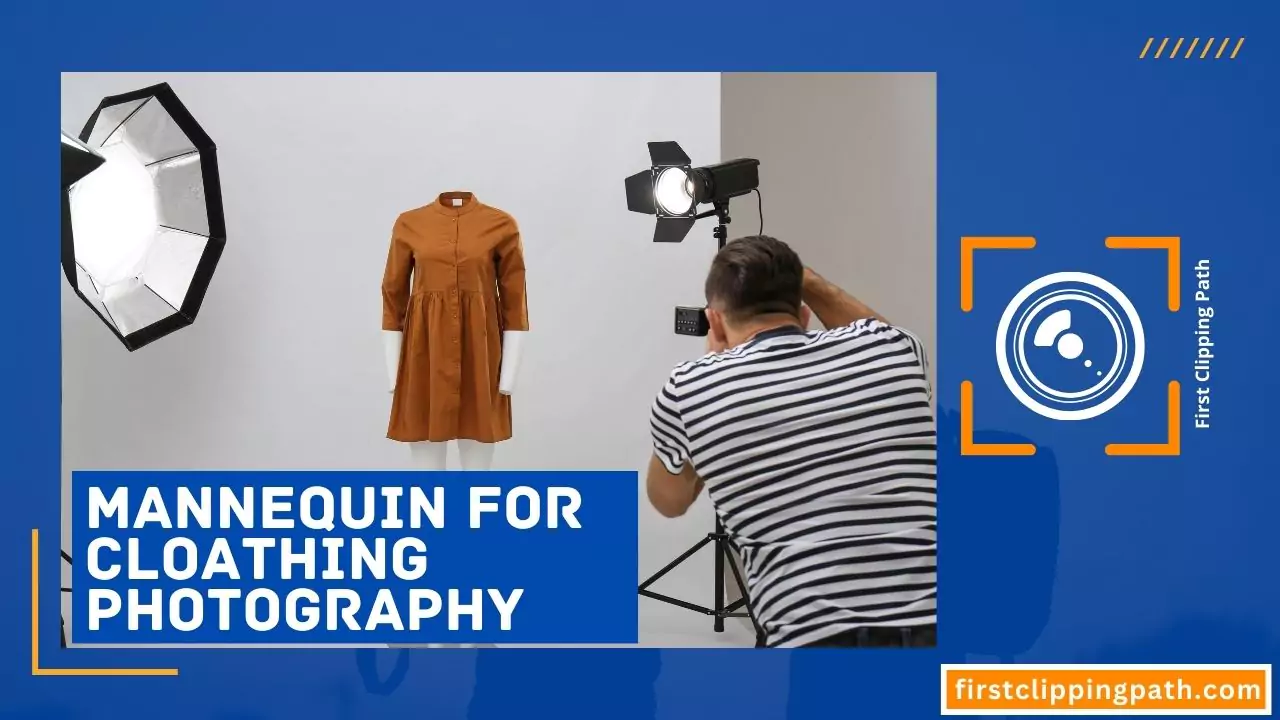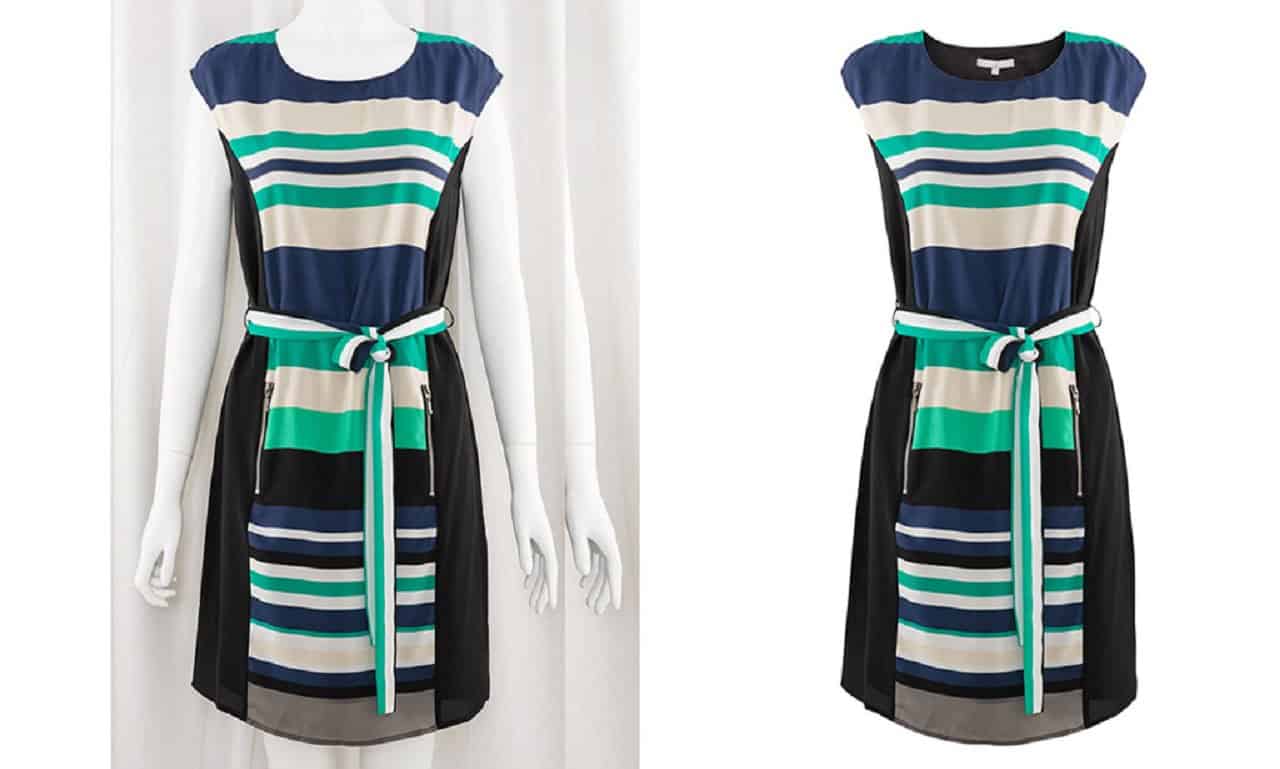Level up your photography skills with a jewelry photography light box to capture picture-perfect jewelry in high-quality images. In this article, we will share pro tips to help you enhance your jewelry photography using a light box.

By following these tips, you can showcase the beauty and intricate details of your jewelry pieces to attract potential customers and drive sales. With the use of a light box, you can achieve optimal lighting conditions, eliminate shadows, and capture stunning images that truly highlight the brilliance and craftsmanship of your jewelry.
Whether you are a professional jeweler or an aspiring photographer, these tips will help you create compelling visuals that make your jewelry stand out in a crowded market.
Choosing The Right Light Box
Understanding The Different Types of Light Boxes Available
When it comes to jewelry photography, using a light box can make a world of difference in the results you achieve. But with so many options out there, how do you choose the right one? Understanding the different types of light boxes available is the first step in finding the perfect fit for your photography needs.
Here are the key points to keep in mind:
- Traditional light boxes: These are the most common type of light boxes used for jewelry photography. They typically consist of a box with diffused lighting on multiple sides to evenly illuminate the subject. Traditional light boxes are easy to use and offer consistent lighting for your jewelry photos.
- Led light boxes: Led light boxes have gained popularity in recent years due to their energy efficiency and long lifespan. These light boxes use led lights that provide bright, natural lighting for your jewelry. Led light boxes are a great option if you’re looking for vibrant and true-to-life colors in your photographs.
- Portable light boxes: If you often shoot jewelry on location or need a light box that’s easy to set up and take down, a portable light box is worth considering. These compact light boxes are lightweight and collapsible, making them convenient for traveling or limited-space setups.
Factors to Consider When Selecting a Light Box
With so many different light boxes to choose from, it can be overwhelming to find the perfect one for your needs. To make the selection process easier, here are some factors to consider:
- Size: The size of the light box is an important consideration, as it determines the types of jewelry you can photograph. If you primarily shoot smaller pieces, a smaller light box may be sufficient. However, if you photograph larger items or want more flexibility in your compositions, a larger light box would be a better choice.
- Lighting options: Different light boxes offer various lighting options, such as adjustable brightness or color temperature. Consider whether you need these features and if they align with your desired photography style.
- Budget: Light boxes come in a range of prices, so it’s important to set a budget before you start your search. Consider what you’re willing to invest in and find a light box that offers a good balance between price and quality.
Comparing The Pros and Cons of Different Light Box Options
To help you make an informed decision, let’s take a look at the pros and cons of each light box option:
Traditional light boxes:
- Pros: Easy to use, consistent lighting, widely available.
- Cons: Bulky, limited customization options.
Led light boxes:
- Pros: Energy-efficient, long lifespan, vibrant colors.
- Cons: Higher initial cost, may generate heat.
Portable light boxes:
- Pros: Lightweight, easy to set up and transport, suitable for on-location shooting.
- Cons: Limited size options, may lack advanced lighting features.
By understanding the different types of light boxes available, considering key factors, and comparing the pros and cons of each option, you’ll be well-equipped to choose the right light box for your jewelry photography needs. Level up your photography skills with a light box and capture stunning, picture-perfect jewelry shots every time.
Essential Lighting Techniques
Capturing stunning photographs of jewelry requires mastering the art of lighting. The right lighting techniques can enhance the natural sparkle and beauty of the gems, resulting in picture-perfect images that grab attention. In this blog post, we will explore essential lighting techniques that will help you level up your jewelry photography skills with a light box.
Whether you prefer natural light or artificial lighting, we have got you covered. So, let’s dive right in and discover the secrets to achieving jaw-dropping jewelry photos!
The Role of Lighting in Jewelry Photography
- Lighting plays a crucial role in highlighting the brilliance and details of jewelry pieces.
- Proper lighting brings out the colors, textures, and reflections, making the jewelry come to life.
- Effective lighting can create a mesmerizing play of light and shadow, adding depth and dimension to your photographs.
Using Natural Light Effectively
- Natural light is a free and abundant resource that can yield incredible results when used correctly.
- Position your light source, such as a window, to create soft and diffused lighting.
- Avoid harsh shadows by diffusing the light with a sheer curtain or using a reflector to bounce light back onto the jewelry.
- Experiment with different angles and times of day to find the magical golden hour or the soft light of a cloudy day.
How to Use Artificial Lighting in A Light Box Setup
- Artificial lighting in a light box offers consistent and controlled illumination for your jewelry photography.
- Use studio lights or led panels to create an even light source without any unwanted shadows.
- Position the lights to achieve a balanced look, ensuring the jewelry is evenly lit from all angles.
- Adjust the intensity and direction of the lights to highlight specific features and eliminate any reflections.
Achieving The Perfect Balance Between Light and Shadow
- Striking the right balance between light and shadow is essential to showcase the jewelry’s intricate details.
- Experiment with the placement and intensity of your light sources to create interesting shadows that enhance the jewelry’s shape and texture.
- Use reflectors or diffusion material to soften harsh shadows and create a more pleasing aesthetic.
- Regularly review your images and make adjustments as needed, finding the perfect harmony between light and shadow.
Mastering essential lighting techniques in jewelry photography can take your images from ordinary to extraordinary. Whether you choose to harness the beauty of natural light or opt for the precise control of artificial lighting in a light box setup, the results will be worth the effort.
Remember, practice makes perfect, so don’t be afraid to experiment and refine your techniques. Stay tuned for our next blog post, where we will explore composition and styling tips to truly showcase your stunning jewelry collection.
Preparing Your Jewelry for The Photoshoot
When it comes to capturing picture-perfect jewelry, preparing your pieces is just as important as setting up the right lighting and equipment. Properly cleaning, handling, and styling your jewelry can make a world of difference in the final photographs. Here are some pro tips to help you prepare your jewelry for a flawless photoshoot:
Cleaning and Polishing Your Jewelry:
- Gently clean your jewelry using a soft cloth or a jewelry cleaning solution to remove any dirt or fingerprints.
- Use a polishing cloth to give your pieces a brilliant shine and remove any tarnish.
- Pay special attention to gemstones and settings, ensuring they are free from any grime or debris.
- If necessary, consider taking your jewelry to a professional jeweler for deep cleaning and polishing.
Handling Delicate Pieces with Care:
- Use clean, lint-free gloves or specialized tweezers when handling delicate or valuable jewelry to prevent oils and fingerprints from transferring onto the surface.
- Avoid applying excessive pressure or force when manipulating the jewelry to prevent any accidental damage.
- Work on a soft, cushioned surface to minimize the risk of chips or scratches occurring.
Styling and Arranging Your Jewelry for The Best Visual Impact:
- Consider the overall aesthetics and style you want to convey in your photos. Choose complementary props or backgrounds that enhance the beauty of your jewelry without overshadowing it.
- Experiment with different angles and compositions to highlight specific features or details of your jewelry.
- Use stands, display cases, or mannequin hands to showcase the jewelry in an appealing and eye-catching way.
- Pay attention to small details such as clasps, hooks, and chains, ensuring they are properly aligned and arranged for a professional look.
Considerations for Capturing Gemstone Details:
- Use macro lenses or zoom in closely to capture the intricate details of gemstones, ensuring they are in sharp focus.
- Utilize natural or diffused light to bring out the brilliance and sparkle of gemstones.
- Experiment with different lighting angles to highlight the unique characteristics and colors of each gemstone.
- Avoid excessive reflections or glare by using a polarizing filter or adjusting the lighting setup accordingly.
By following these pro tips for preparing your jewelry before a photoshoot, you’ll be able to ensure that your pieces look their absolute best in every photograph. Taking the time to clean, handle with care, style, and consider gemstone details will result in stunning and captivating images that showcase the true beauty of your jewelry.
Camera Settings for Stunning Results
Using the right camera settings is crucial for capturing stunning jewelry photographs that truly showcase the beauty and intricacy of each piece. Whether you’re a jewelry enthusiast looking to upgrade your photography skills or a professional jeweler wanting to showcase your creations online, understanding camera settings is essential.
In this section, we’ll dive into the key aspects of camera settings for jewelry photography, including aperture, shutter speed, is, white balance, color temperature, and macro mode or dedicated macro lenses for close-up shots. So let’s get started and level up your photography skills to capture picture-perfect jewelry!
Understanding The Basics of Camera Settings:
- Aperture, shutter speed, is, white balance and color temperature are the fundamental camera settings to master for jewelry photography.
- Adjusting these settings allows you to control the depth of field, exposure, noise levels, and color accuracy in your photographs.
Choosing The Right Aperture, Shutter Speed, And Iso for Jewelry Photography:
- Aperture: Use a smaller aperture (higher f-stop number) to increase the depth of field and keep more of the jewelry in focus.
- Shutter speed: Employ a tripod or stable surface to keep the camera steady and use slower shutter speeds without introducing unwanted blur.
- Iso: Set the iso to the lowest possible value to minimize noise and achieve sharper images with better color rendition.
Navigating White Balance and Color Temperature:
- White balance: Select the appropriate white balance setting on your camera, or manually adjust it if needed, to ensure accurate color reproduction.
- Color temperature: Understand how different lighting conditions affect the color temperature and adjust accordingly to achieve the desired ambiance in your photographs.
Using Macro Mode or A Dedicated Macro Lens for Close-Up Shots:
- Macro mode: Activate the macro mode on your camera to capture detailed close-ups of jewelry pieces. This setting allows you to focus on intricate details and textures.
- Dedicated macro lens: Consider investing in a macro lens for your camera to enhance the quality and precision of your close-up shots. These lenses are specifically designed to capture small subjects with exceptional clarity.
By understanding and implementing these camera settings, you’ll be able to produce stunning and visually appealing photographs of jewelry that bring out the brilliance and uniqueness of each piece. With practice and experimentation, you’ll enhance your photography skills and elevate the presentation of your jewelry in the digital world.
So grab your camera, set up a light box, and capture picture-perfect jewelry that leaves viewers in awe!
Mastering Composition and Angles
Composing Visually Appealing Jewelry Photos
When it comes to showcasing your exquisite jewelry pieces, capturing visually appealing photos is essential. A well-composed photograph can instantly elevate the perceived value and allure of your jewelry. By paying attention to composition and angles, you can create stunning images that grab attention and entice potential customers.
Here are some pro tips to help you master the art of jewelry photography:
- Utilizing the rule of thirds for balanced compositions:
- Divide your frame into a 3×3 grid by imagining two horizontal and two vertical lines.
- Place the main subject (the jewelry piece) at one of the points where the lines intersect.
- This technique adds visual interest and balance to your composition.
- Avoid centering the jewelry piece, as it can result in a static and less dynamic image.
- Showcasing different angles and perspectives:
- Experiment with various angles to find the most flattering and intriguing views of your jewelry.
- Shoot from above to capture detailed shots of intricate designs or gemstone arrangements.
- Try shooting at eye level to create a more intimate connection with the viewer.
- Explore side angles to highlight the depth and dimension of your jewelry.
- Don’t be afraid to think outside the box and capture unique perspectives that make your pieces stand out.
- Highlighting the unique features of each piece:
- Every jewelry piece has its own unique characteristics that deserve to be showcased.
- Pay attention to the elements that make each piece special, such as gemstone cuts, metalwork details, or delicate engravings.
- Use lighting and angles to emphasize these features and make them the focal points of your photographs.
- Capture close-up shots to capture the textures and intricacies that set your jewelry apart.
Mastering composition and angles in jewelry photography is a game-changer for capturing picture-perfect photos. By utilizing the rule of thirds, exploring different angles, and highlighting unique features, you can create visually compelling images that leave a lasting impression on your audience.
With practice and attention to detail, you’ll be able to take your jewelry photography to the next level and showcase your pieces in the best possible light.
Accessories for Enhancing Jewelry Photography
Are you tired of struggling to capture picture-perfect images of your jewelry pieces? Look no further, as we have some pro tips to level up your photography skills and enhance the visuals of your accessories. In this section, we will explore the various accessories you can use to enhance your jewelry photography.
From reflectors and diffusers to tripods and remote shutter releases, as well as additional props and backdrops, these tools will help you achieve stunning results. So, let’s dive in!
Using Reflectors and Diffusers to Control Light:
- Reflectors: These handy accessories bounce light onto the jewelry piece, reducing harsh shadows and adding a natural glow.
- Diffusers: Diffusers soften the light source, creating a more even and flattering lighting for your jewelry.
- Reflectors and diffusers work together to control the intensity and direction of light, giving you complete control over the lighting conditions for your photos.
Tripods and Remote Shutter Releases for Stability:
- Tripods: A tripod ensures stability, eliminating any shake or blur when capturing images. It allows you to set up your shot and experiment with different angles and compositions.
- Remote shutter releases: Remote shutter releases enable you to snap the photo without physically touching the camera, minimizing any potential camera shake.
Additional Props and Backdrops to Enhance the Overall Aesthetic:
- Props: Incorporating props that complement your jewelry can add interest and context to your photos. Consider using items such as flowers, delicate fabrics, or related accessories.
- Backdrops: Choosing the right backdrop can significantly enhance the overall aesthetic of your jewelry photography. You can opt for clean and minimalist backgrounds to let your jewelry take center stage, or experiment with textures and patterns to create a unique visual appeal.
By utilizing reflectors and diffusers to control light, investing in tripods and remote shutter releases for stability, and incorporating additional props and backdrops to enhance the overall aesthetic, you can take your jewelry photography to the next level. Experiment with these accessories and unleash your creativity to capture truly stunning images that showcase your jewelry in all its glory.
Post-Processing Techniques for Perfecting Your Jewelry Photos
Editing and Retouching Your Jewelry Images
When it comes to capturing picture-perfect jewelry photos, the work doesn’t stop after clicking the shutter button. Post-processing techniques play a crucial role in enhancing the beauty of your images and making your jewelry truly shine. In this section, we’ll explore some essential editing and retouching tips to help you perfect your jewelry photos.
Adjusting Exposure, Color Balance, And Saturation
One of the key aspects of photo editing is fine-tuning the exposure, color balance, and saturation to achieve a visually appealing result. Here are some points to keep in mind:
- Adjust the exposure to control the brightness and contrast of your jewelry photos. Make sure to maintain the details in both the highlights and the shadows.
- Use color balance adjustments to correct any color casts or unwanted color shifts in your images. This will help you achieve accurate and true-to-life colors in your jewelry.
- Enhance the saturation selectively to make the colors in your jewelry pop without making them appear overly saturated or unnatural.
Removing Imperfections and Blemishes
To make your jewelry photos look flawless and professional, it’s essential to remove any imperfections and blemishes that may distract from their beauty. Here are a few tips to help you with this:
- Utilize the spot healing brush or clone stamp tool to remove minor imperfections like dust particles, scratches, or fingerprints.
- Pay attention to details and make sure to fix any noticeable imperfections, such as scratches on gemstones or blemishes on metal surfaces.
- Take extra care when retouching intricate parts of the jewelry, like prongs or engravings, to maintain their natural appearance.
Tips for Resizing and Optimizing Images for Online Platforms
When it comes to displaying your jewelry photos online, it’s crucial to resize and optimize them properly to ensure fast loading times and optimal visual quality. Here are a few tips to help you with this:
- Resize your images to an appropriate resolution for the specific online platform you’re using. This will help to maintain image sharpness and prevent distortion.
- Compress your images without sacrificing too much quality to reduce their file size, ensuring faster loading times on your website or social media profiles.
- Consider using the appropriate file format, such as jpeg or png, depending on the type of image and your intended usage.
By mastering these post-processing techniques, you’ll be able to take your jewelry photography to the next level. Remember, the key is to enhance the beauty of your jewelry while maintaining a natural and authentic look. So grab your editing tools and start perfecting those stunning jewelry images!
Showcasing Your Jewelry Online
Creating a visually appealing online gallery or website for your jewelry:
- Choose a clean and minimalist design for your online gallery or website to let your jewelry shine.
- Use high-resolution images to showcase the intricate details of your jewelry.
- Arrange your jewelry in an organized and attractive manner, allowing customers to easily browse through your collection.
- Incorporate eye-catching colors and fonts that complement your jewelry’s aesthetics.
- Include a clear and concise description for each piece of jewelry, highlighting its unique features and materials used.
Optimizing your images for web display and fast loading times:
- Resize your images to the appropriate dimensions for web display, balancing image quality and file size.
- Compress your images without compromising their visual appeal to ensure quick loading times.
- Use alt tags and descriptive file names for your images, improving their discoverability in search engine results.
- Leverage lazy loading techniques to prioritize the loading of visible images, enhancing the user experience.
- Utilize responsive design to ensure your images adapt seamlessly to different screen sizes and devices.
Harnessing the power of social media to reach your target audience:
- Identify social media platforms that cater to your target audience and create compelling profiles on those platforms.
- Regularly share high-quality images and videos of your jewelry to engage your followers.
- Collaborate with influencers in the jewelry or fashion niche to expand your reach and gain credibility.
- Encourage user-generated content by running contests or creating campaigns that encourage customers to share their jewelry photos.
- Utilize social media analytics tools to track the performance of your posts and identify opportunities for improvement.
Utilizing SEO techniques to improve visibility in search results:
- Conduct keyword research to identify relevant keywords and incorporate them naturally throughout your website and product descriptions.
- Optimize your metadata, including page titles, meta descriptions, and image alt tags, to improve search engine visibility.
- Create informative blog posts or guides related to jewelry that provide value to your target audience.
- Implement internal linking strategies to enhance website navigation and improve search engine crawling.
- Regularly monitor your website’s performance metrics and make necessary adjustments to improve search engine rankings.
Frequently Asked Questions for Pro Tips for Picture-Perfect Jewelry: Level Up Your Photography Skills with A Light Box
What Is a Light Box for Jewelry Photography?
A light box is a device that diffuses light to create a controlled environment for capturing stunning jewelry photos.
How Does a Light Box Improve Jewelry Photography?
A light box enhances jewelry photography by providing consistent lighting, eliminating shadows, and showcasing intricate details.
What Are the Benefits of Using a Light Box?
Using a light box for jewelry photography offers advantages such as professional-looking images, improved color accuracy, and time-saving post-processing.
Can I Make a DIY Light Box for Jewelry Photography?
Yes, you can create a DIY light box using affordable materials like cardboard, tissue paper, and led lights. There are many tutorials available online.
How Should I Position the Lights in The Light Box?
Place the lights on both sides and above the light box to achieve even lighting and prevent harsh shadows on your jewelry pieces.
What Types of Backgrounds Work Best in A Light Box?
A plain white or neutral-colored background is ideal for jewelry photography, as it allows the focus to remain on the jewelry itself.
Which Camera Settings Should I Use for Jewelry Photography?
Adjust your camera settings to a low ISO, and small aperture for increased depth of field, and use a tripod to ensure sharp, detailed photos.
How Can I Effectively Showcase the Sparkle of Gemstones?
Use a macro lens to capture the intricate details of gemstones, and experiment with angles and lighting to highlight their sparkle and brilliance.
Are There Any Post-Processing Tips for Jewelry Photography?
In post-processing, focus on retouching minor imperfections, adjusting brightness and contrast, and cropping to enhance the jewelry’s overall appearance.
Where Can I Learn More About Jewelry Photography?
There are numerous online tutorials, courses, and blogs dedicated to jewelry photography. Seek out resources that offer practical tips and techniques.
Conclusion
Taking stunning pictures of your jewelry can be a game-changer for your business. By investing in a light box and following these pro tips, you can level up your photography skills and showcase your jewelry in the best possible way.
Start by choosing the right background and props to enhance the beauty of your pieces. Pay attention to lighting and use diffusers to soften harsh shadows. Experiment with different angles and perspectives to add depth and interest to your photos.
Don’t forget to edit your images to enhance colors and remove any imperfections. Finally, consistently optimize your photos with relevant keywords to improve their visibility in search engine results. Remember, the quality of your jewelry photography directly impacts customer perception and can significantly boost your online sales.
So, take the time to master these techniques and watch your jewelry shine in pictures like never before.



